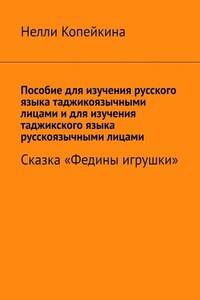© Марина Юрьевна Грабарь, 2020
ISBN 978-5-4498-8175-5
Создано в интеллектуальной издательской системе Ridero
Для преподавателей английского языка или самостоятельной работы студентов.
Уровень английского B2.
Метод кейсов. Метод конкретных ситуаций – техника обучения, использующая описание реальных ситуаций. Обучающиеся должны исследовать ситуацию, разобраться в сути проблем, предложить возможные решения и выбрать лучшие из них.
Военный английский – это изучение и практика английского языка в контексте армии 21 века. Аутентичные материалы представляют реальные источники. В конце каждой темы есть раздел «Ключевые понятия и словарь», чтобы каждый учащийся мог ознакомиться с конкретной военной терминологией и информацией. В каждом кейсе есть все, что вам нужно. Решения, ответ, ключ. Кейсы организованы в четыре группы. Каждый из них может быть прочитан, обсуждён и использован для одной главной цели; и каждый может быть прочитан, обсуждён, и использован, чтобы понять сложность и поведение человека в различных ситуациях. Кейсы помогают преобразовать информацию и примеры в тексте в реальные знания. Предоставлены все ресурсы.
The cases in this book all deal with specific situations, specific problems, specific decisions.
They are all military situations, military problems, and military decisions.
They should thus be approached by students and instructors as cases that ask,
How should one handle this?
What is Military English?
Military English is the study and practice of the English language in the context of the
Military. The authentic materials were selected from real sources being re-written with a more appropriate level of grammar and vocabulary.
At the end of each unit, there is a vocabulary section
so as each student could review the specific military terminology and the information.
All cases have everything you need. Solutions, Answer Key.
Как пользоваться данной книгой.
Кейс (от англ. сase) – это описание конкретной ситуации или случая в какой-либо сфере: социальной, экономической, медицинской и т. д. Как правило, кейс содержит не просто описание, но и некую проблему или противоречие и строится на реальных фактах.
Соответственно, решить кейс – это значит проанализировать предложенную ситуацию и найти оптимальное решение.
Кейс-метод позволяет совершенствовать «мягкие навыки» (soft skills),которые оказываются крайне необходимы в реальном рабочем процессе.
Сейчас решение кейсов как метод обучения используется во всех ведущих бизнес-школах, университетах и корпорациях.
Решение кейсов состоит из нескольких шагов:
1) исследования предложенной ситуации (кейса);
2) сбора и анализа недостающей информации;
3) обсуждения возможных вариантов решения проблемы;
4) выработки наилучшего решения.
Кейс объединяет в себе два компонента: исследовательский и учебный, поэтому процесс его создания предполагает работу консультанта (я как технический специалист), сертификаты :
– NATO CIMIC AWARENESS COURSE. Информационная подготовка. Civil-Military Cooperation Centre of Excellence (CCOE). Центр подготовки НАТО
– Основы контроля оружия. Химическое, биологическое, ядерное оружие тип1, ядерное оружие тип 2.EU Non-Proliferation Consortium. Консорциум Еевропейского Союза
и преподавателя одновременно (Международные квалификации TESOL, TEFL (право преподавать английский как иностранный в любой стране мира, следуя при этом современной коммуникативной методике).
Задача коммуникативной методики – научить спонтанной речи на любые темы, и перестать переводить мысли с русского на иностранный язык. Коммуникативный подход, в общем и целом, предполагает изучение слов в контексте, без перевода на русский язык. И задача преподавателя не только научить Вас понимать, ЧТО означает слово, но и КАК его употреблять.
MILITARY LEADERSHIP STYLE
State Loses Control Over Its Nuclear Weapons Illustrative Scenario:
The Democratic People’s Republic of Korea (DPRK) DPRK Nuclear, Chemical, Biological, and Missile Sites
The DPRK’s WMD and missile programs include approximately 141 sites (excluding tactical sites) identified as being of potential interest for WMD-E operations, 39 of which are associated with its nuclear program, 38 are related to its CW program, and 15 are related to its bioweapons (BW) program. An additional 49 sites are associated with the ballistic missiles that might launch WMD.
For WMD-E operations, we assess that the order of priority of these sites would be:
– Nuclear fuel enriching and processing sites, and nuclear weapon manufacturing, testing, and storage sites
– Missile garrisons holding missiles capable of carrying nuclear weapons
– Research and development sites and nuclear-related universities
– Other nuclear sites – including mines, low-grade ore processing
– Biological weapons research and development, manufacturing, testing, and storage sites
– CW research and development, manufacturing, testing, and storage sites.
Unclassified sources identify nine sites in the DPRK that fall into the first category: Yongbyon Nuclear Research Center, one nuclear test site, four additional undeclared nuclear enrichment sites, one suspected underground nuclear storage site, one undeclared underground enrichment and reprocessing site, and one site associated with nuclear weaponization. These nine nuclearsites are shown in Figure 1.1.
The figure also depicts a notional buffer line that might be established by Chinese forces—50 km in this example – in the event that China decides to establish a zone within North Korea to control the flow of refugees or otherwise manage further developments on the peninsula. An interesting feature of such a zone would be the number of priority WMD and missile sites remaining outside it. In this notional case, five nuclear and seven missile sites would remain on the U.S. side.
A key operational decision – and one that will be greatly affected by the quality of available intelligence – will be whether and in what priority to seize and reduce each site. The combined commander/JFC would then develop a campaign plan to exploit these and any other sites found during the course of operations.
Table 1.3
– Campaign Design
A WMD-E campaign would balance key objectives and missions; strategic, operational, and tactical risks; and the joint forces needed to interdict, attack, and/or eliminate nuclear forces and sites quickly enough to minimize the risks of proliferation or use. The WMD-E maneuver scheme could adopt one or a combination of the following approaches:
– a northward movement of U.S. ground forces and RoK allies across the DMZ along one or more axes of advance; (2) the introduction of forces from the sea on one or both coasts to reduce the distances that ground forces need to advance to reach priority nuclear WMD sites; and/or (3) air maneuver operations involving airborne or air assault forces directly assaulting the highest-priority sites, with other ground forces maneuvering to meet up with these forces, and joint SOF, air, and naval forces supporting.








